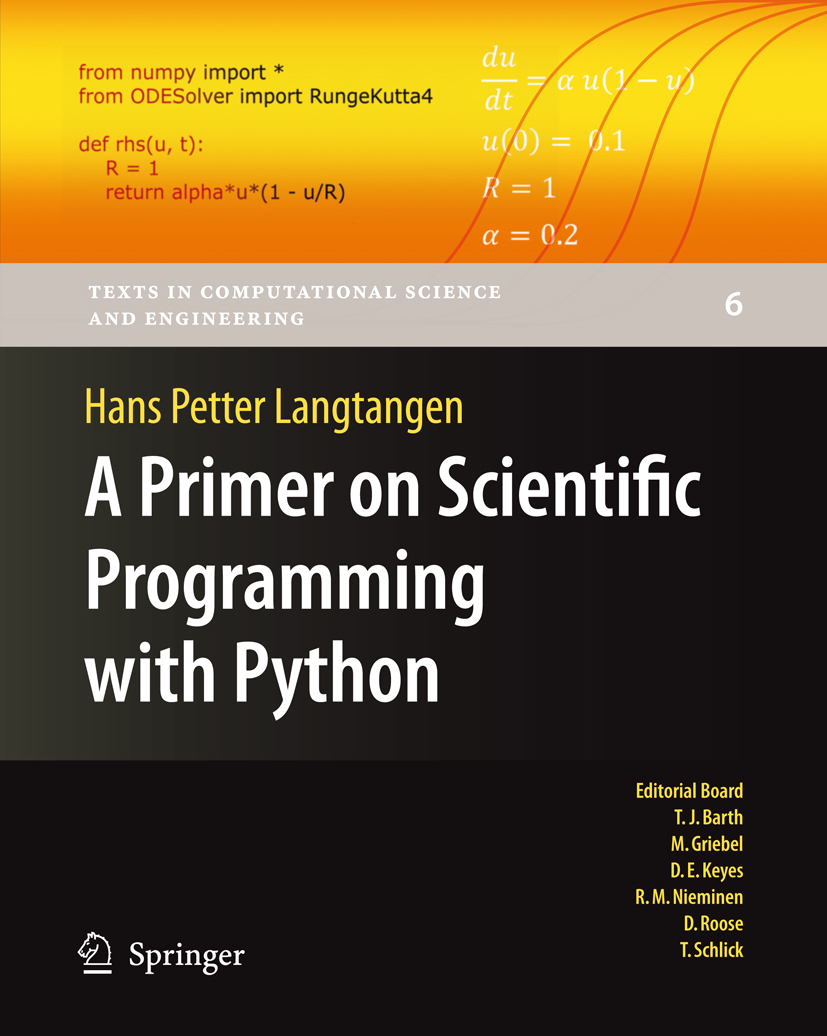A Primer On Scientific Programming With Python 3rd Pdf File

Programming python 4th edition pdf download. Programming Python. Efficient.Resources for A Primer on Scientific Programming with Python. A Primer on Scientific Programming with Python. PDF; ebooks can be used. Driver For Texet Bluetooth Mouse. “A Primer on Scientific Programming with Python simultaneously introduces us to the. Full-Text Paper (PDF) 10.1007/978-3-642-54959-5 ResearchGate, the professional network for scientists. Resources for A Primer on Scientific Programming with Python. An important change from the 4th edition is that the directory files in the 4th edition is named dictstring in the 5th edition. You can also directly access. On Unix/Linux or Mac, download the tarfile book-examples-3rd.tar.gz for the 3rd edition and pack it out.
The book serves as a first introduction to computer programming of, using the high-level language. The exposition is example- and problem-oriented, where the applications are taken from, numerical calculus, statistics,, biology, and finance. The book teaches '-style' and procedural programming as well as object-oriented programming. High school mathematics is a required background, and it is advantageous to study classical and numerical one-variable calculus in parallel with reading this book. Besides learning how to program computers, the reader will also learn how to solve mathematical problems, arising in various branches of science and, with the aid of numerical methods and programming. By blending programming, mathematics and scientific applications, the book lays a solid foundation for practicing computational science.
Resources for A Primer on Scientific Programming with Python Resources for A Primer on Scientific Programming with Python Hans Petter Langtangen ( hpl at simula.no) The 5th edition Changes from the fourth to the fifth edition. Substantial changes were introduced in the fourth edition, and the fifth edition is primarily a consolidation of those changes. Many typos have been corrected and many explanations and exercises have been improved.
The emphasis on unit tests and test functions, especially in exercises, is stronger than in the previous edition. Symbolic computation with the aid of SymPy is used to a larger extent and integrated with numerical computing throughout the book. All classes are now new-style (instead of old-style/classic as in previous editions). Examples on Matplotlib do not use the pylab module anymore, but pyplot and MATLAB-like syntax is still favored to ease the transition between Python and MATLAB. The concept of closures is more explicit than in earlier editions (see the new Section 7.1.7) since this is a handy and popular construction much used in the scientific Python community. We also discuss the difference between Python 2 and 3 and demonstrate how to use the future module to write code that runs under both versions.
The most substantial new material in the fifth edition appears toward the end of Chapter 5 and regards high-performance computing, linear algebra, and visualization of scalar and vector fields. The numbering of sections and in particular exercises differs from previous editions. All programs from the book On Unix/Linux or Mac, download the tarfile for the 5th edition and pack it out. Unzip book-examples-5th.zip or double click on the file icon. The result is a folder (directory) tree src with subfolders containing the program examples for different chapters in the book ( formulas, looplist, etc., as explained in the introduction to each chapter). An important change from the 4th edition is that the directory files in the 4th edition is named dictstring in the 5th edition. You can also directly access the latest version of the example files at, see the directory (to download a file, click the Raw button on the right first to get the pure text file in the browser and then right-click to download).
To copy the whole repository to your computer, run. Git clone Erratalist Here is a or an with an errata list for the 5th edition of the book.
If you find any typo or error, please report it to. More resources and information for the latest edition Software installation There are several ways to access Python, either on your computer or in the cloud. In the book gives an overview of recommended technologies and how to use them to get the software you need for working with the book. Our primary recommendation is to install Anaconda - it suffices for the book. However, if you intend to do more advanced scientific computing in the future, we strongly recommend to use a virtual Ubuntu machine for all that work. The package SciTools is freqently referred to and used in the book.